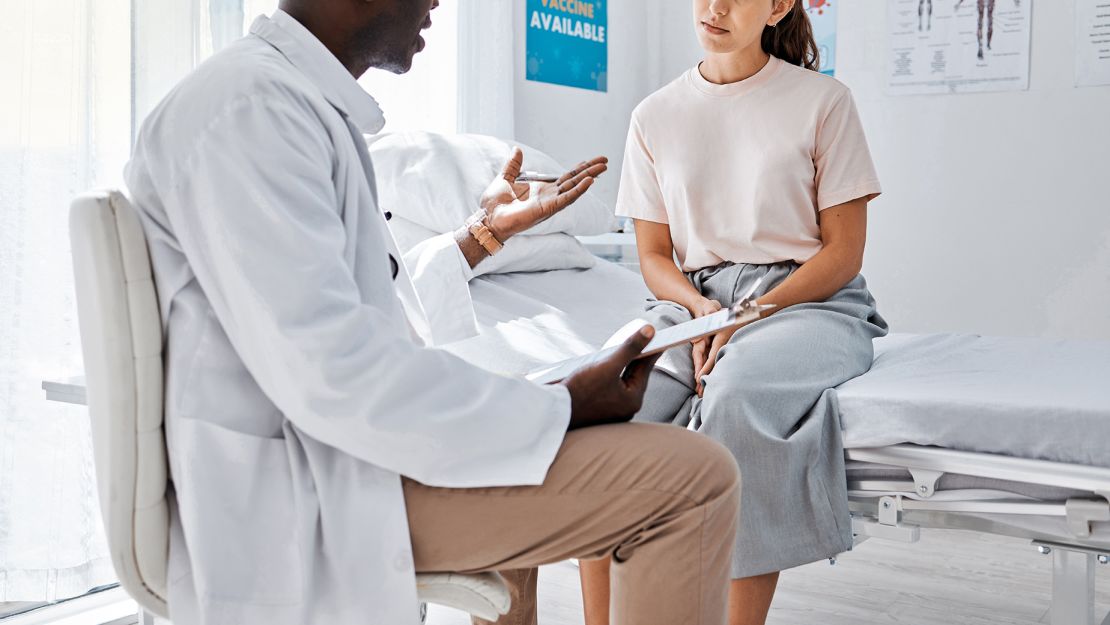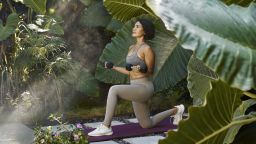Sign up for CNN’s Fitness, But Better newsletter series. Our seven-part guide will help you ease into a healthy routine, backed by experts.
Has your doctor quizzed you about your level of physical activity? If so, you can thank Exercise is Medicine, a global health initiative managed by the American College of Sports Medicine.
Created in 2007, the initiative encourages health care providers to assess patients’ physical activity during visits, plus include regular exercise when designing care plans. The amount and types of exercise that medical professionals recommend should be based on each person’s current health and ability.

The philosophy behind the initiative is simple: Physical activity promotes optimal health. Regular movement also helps to prevent and even treat various medical conditions. Overwhelming evidence links physical inactivity to poor health and high health care costs, according to a 2020 article in the American Journal of Lifestyle Medicine. The study concluded that health care and fitness programs should be merged.
In addition, people who were moderately to vigorously active for at least 150 minutes per week had nearly half the health care utilization compared with those who were sedentary, according to a study done by Salt Lake City-based health care system Intermountain Health that was presented at the 2019 annual meeting of the American College of Sports Medicine and accepted for publication.
The study also found the active people had half the total cost of health care compared with the sedentary folks, defined as those who engaged in one minute per week of moderate to vigorous activity, said Dr. Elizabeth Joy, chief medical officer at health technology company Lore Health and chair of the EIM governance board.
Unfortunately, while EIM has expanded and achieved many successes, only 22.9% of adult women and 17.8% of adult men were advised by health care professionals to increase their physical activity levels, according to the 2022 US National Health Interview Survey, Joy noted.
With the average primary care visit lasting less than 20 minutes and with health care providers needing to cover many issues, it’s not surprising that so few are addressing physical activity, Joy said.
“It takes very little time to write a prescription,” Joy said. “It takes a whole lot more time to do evidence-based behavior-change counseling.”
Still, progress is being made
Despite EIM’s lack of progress in the doctor’s office, it has created numerous programs, initiatives and exercise prescriptions to help people outside of it.
EIM now includes Exercise is Medicine on Campus, for example, a program that helps colleges and universities promote and assess physical activity among students, faculty and staff. To date, more than 200 US schools and over two dozen international education institutions participate.
The EIM-OC program at Grand Valley State University in Grand Rapids, Michigan, has achieved gold status, said Amy Campbell, associate director of recreation and wellness, which means the university routinely assesses and promotes physical activity on campus. The university offers perks such as free personal training via its exercise science majors, plus a wealth of group fitness classes and wellness coaching.
While some of these offerings were in place before GVSU signed on with EIM-OC, Campbell said the university is working more collaboratively to stress the importance of physical activity.
“The CARE team (which connects distressed students to support services) now always asks students, ‘What do you do outside of class? Are you staying physically active? What are activities you enjoy?’” Campbell said. “If they see an opportunity to work with our department, they’ll reach out. For example, if someone can’t afford to participate in an intramural program, we’ll make sure they have access.”
There’s also Moving Through Cancer, the first disease-specific initiative within EIM. The initiative assists with exercise and rehabilitation programming for those living with cancer and beyond. Most people who are physically active during cancer treatment have less severe side effects, feel better more quickly after treatment and, in some cases, have a lowered risk of their cancer returning, research has shown.
EIM also created the Rx for Health Series, which provides exercise prescriptions for people with a wide variety of common chronic conditions, such as Alzheimer’s, depression and anxiety, osteoarthritis, and heart failure.
“If you’ve had a heart attack, you’re at far greater risk of having another one if you spend most of your time on the couch versus going for a walk,” Joy said. “The couch is more dangerous than your walking shoes.”
Communities can inspire fitness, too
While EIM will continue to educate health care providers and students in health care fields about the importance of assessing patients’ activity levels and creating physical activity prescriptions, it’s also looking at other options.
“People don’t respond well to being told to do something,” Joy said. “Rather, people are more likely to engage in and sustain healthy behavior changes when done within their community. If someone’s family, neighborhood, faith-based community or even work environment is supportive of regular physical activity, they’re likely to be more active.”
Absolutely, said Gerren Liles, a certified personal trainer and owner of Gerren Liles Vision Fitness in New York. Various New York City companies have brought in Liles to teach fitness classes for their employees, and he has seen the benefits.
“It’s always good to unite people into working out,” he said. “That can inspire people to take charge of their fitness. It would be great if companies would invest in fitness, if schools would create programs and events for students and even parents, and if media and movies were all promoting physical activity.”
“Healthy behaviors are contagious,” Joy said. “We also have some personal responsibility around physical activity — to really think about how we influence the people around us.”
So the next time you head out for a walk, Joy said, invite a friend or neighbor along.
Melanie Radzicki McManus is a freelance writer who specializes in hiking, travel and fitness.




